What does a breast implant “profile” mean?
Breast implants come in various profiles. Learn how the breast implant’s profile affects the look of your implants.
Breast implants come in various profiles. Learn how the breast implant’s profile affects the look of your implants.
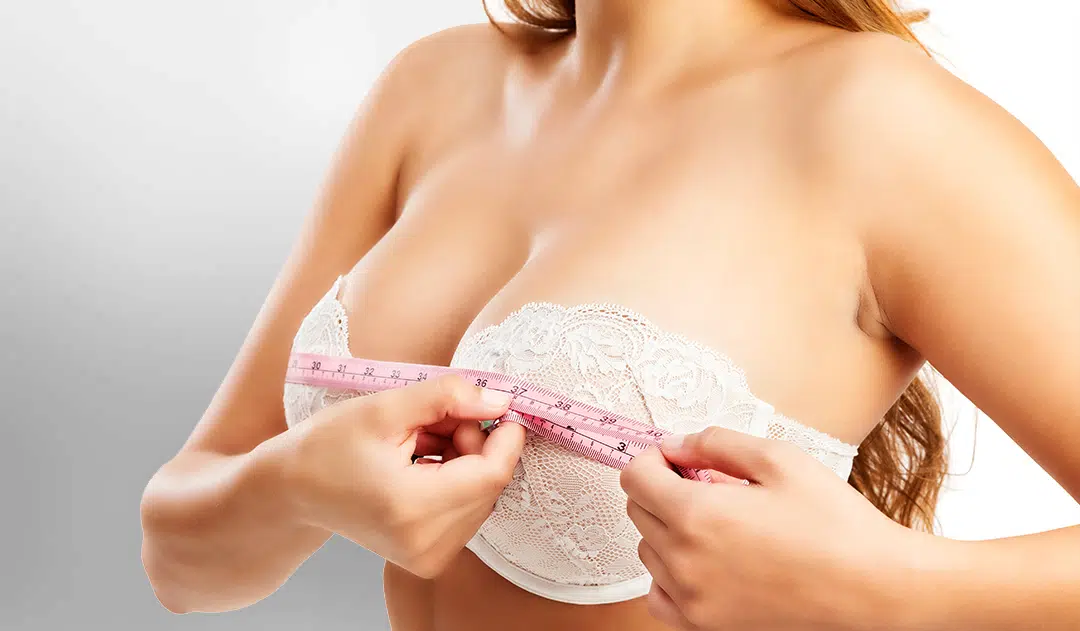
When thinking about breast augmentation surgery, you know that implant size is one of the most implant decisions you will have to make. But, aside from size, an implant’s “profile” can also be an important factor in your choice. For example, let’s say you want a 400 cc (abbreviation for “cubic centimeter”, or also known as “mL” for milliliter) implant. That size implant will come in several different “profiles” that you can choose from. The “profile” refers to how far out the implant sticks out from your chest wall and how wide the implant is.
Back in the “olden days”, all the implants had one profile. Imagine that you have a ball of Play-Doh in your hand and you flatten that ball into a thin pancake. That is what the olden-day implants were like: thin and flat like a pancake. What would happen if you were a thin woman with a narrow chest? The edges of the pancake would spread towards your armpits. People didn’t like that. They wanted the implants to stick out in front more, not out to the sides.
Take that same ball of imaginary Play-Doh and shape it so it is more like a ball. Same volume of Play-Doh but different shape, right? That’s exactly what the implant makers did. They went from making implants that were thin, flat and pancake-y and made them narrower, thicker and half-moon-like. They called the original implants “low profile” and the new implants “high profile”. Then, they made something in-between which they called “moderate profile”. The different profiles enabled thinner patients to get bigger implants, without it going towards their armpits.
Since then, the implant makers have expanded the profiles even further. With more choices, surgeons were also able to match the dimensions of the implant more closely to the individual’s chest measurements.
Now that you understand what a profile is, let’s talk about the different dimensions that make up the profile.
Imagine yourself having breast implants. Now, imagine yourself sitting up and facing a mirror. If you had X-ray vision, and could look directly at the implants, you would see that your breast implants have a width on your chest. That is called the “base width”. Implant manufacturers measure this dimension in centimeters.
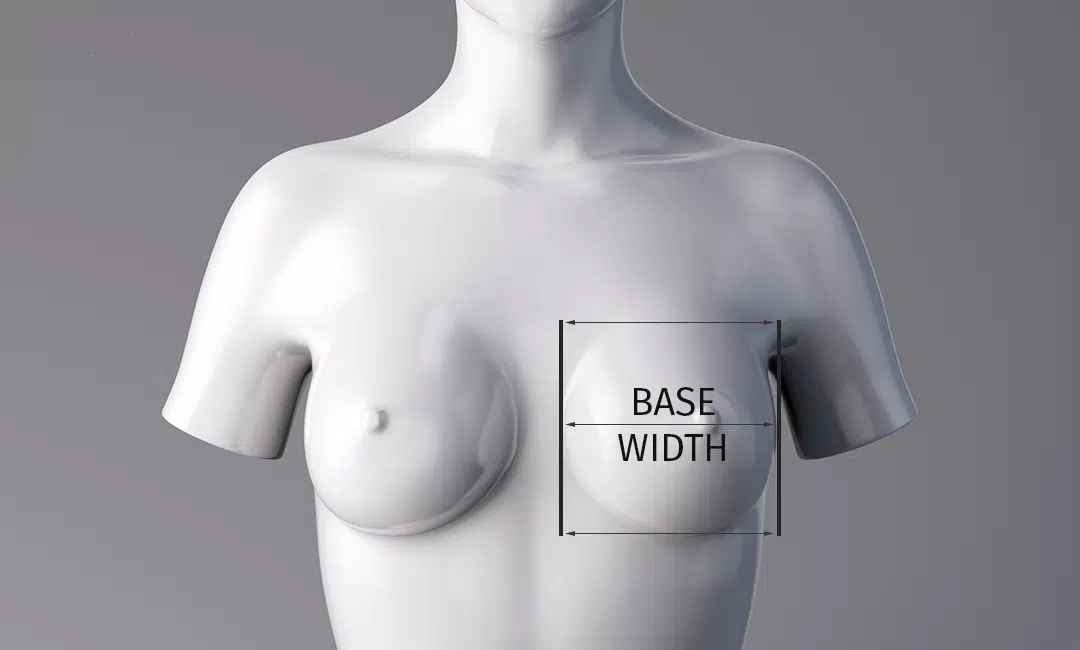
The implant also has a “height” that starts from the bottom of your breast and goes up on your chest.
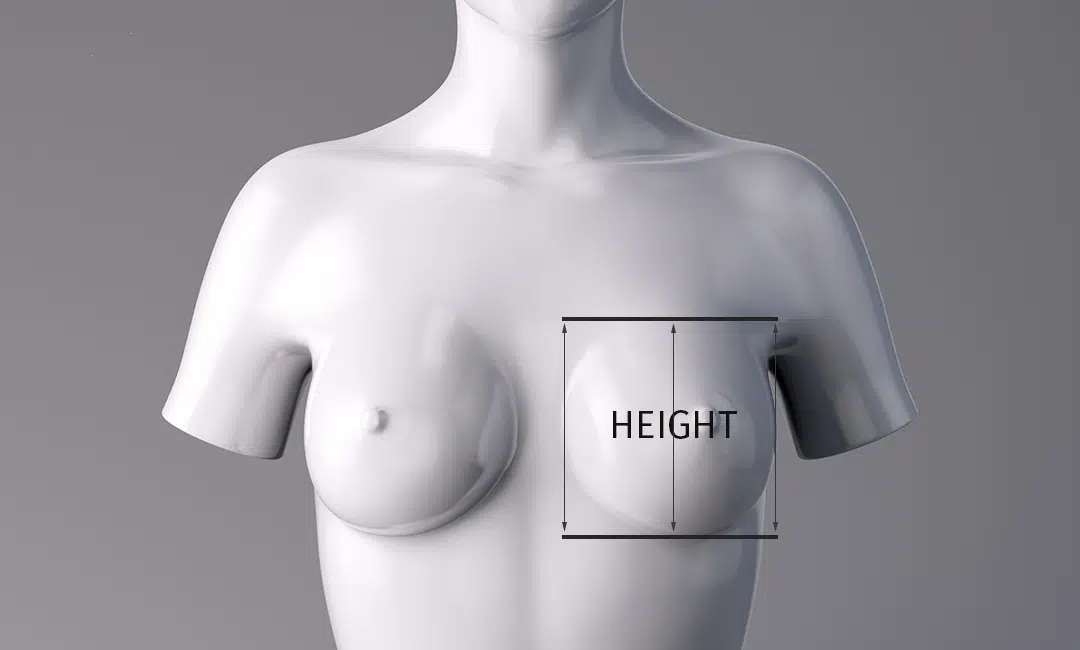
If your implant is round, the number of centimeters of the base width is the same as the height of the implants.
In general, the bigger the implant, the larger the base width and the height. Imagine that the implant is like a book. A small book will sit on the bookshelf and only go a little ways up. A large book will sit on the bookshelf and rise up higher than the small book. Many women want fullness “up top”. In order to do that, you will often need a larger implant because it reaches a higher height up on the chest. But, because the implant height is the same as the base width in a round implant, a larger implant will also stick out towards your armpit more.
Remember how you were imagining looking at yourself while facing the mirror? Now, turn so you are looking at a side view of yourself. When you use your X-ray vision and look at yourself from the side, you can see that the implant sticks out a certain distance from your chest wall. This distance is called the “projection” of the implant.
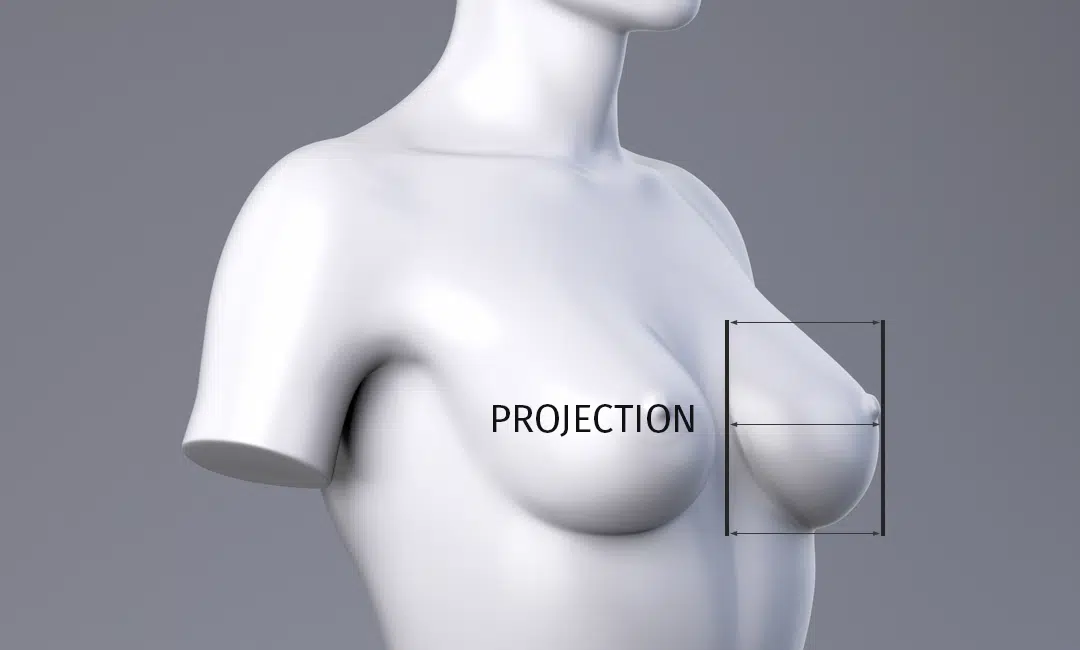
To sum up, an implant has 3 important measurements: the base width, the height, and the projection.
Implant profile ranges from low to high, and different manufacturers will have different specifications and names for the profiles they offer. For example, Allergan’s Natrelle Silicone gummy breast implants are available in five different profiles – Low, Low Plus, Moderate, Full, and Extra Full. Each profile is available in a range of sizes, so understanding profile will help you make your decision when it comes to your implants.
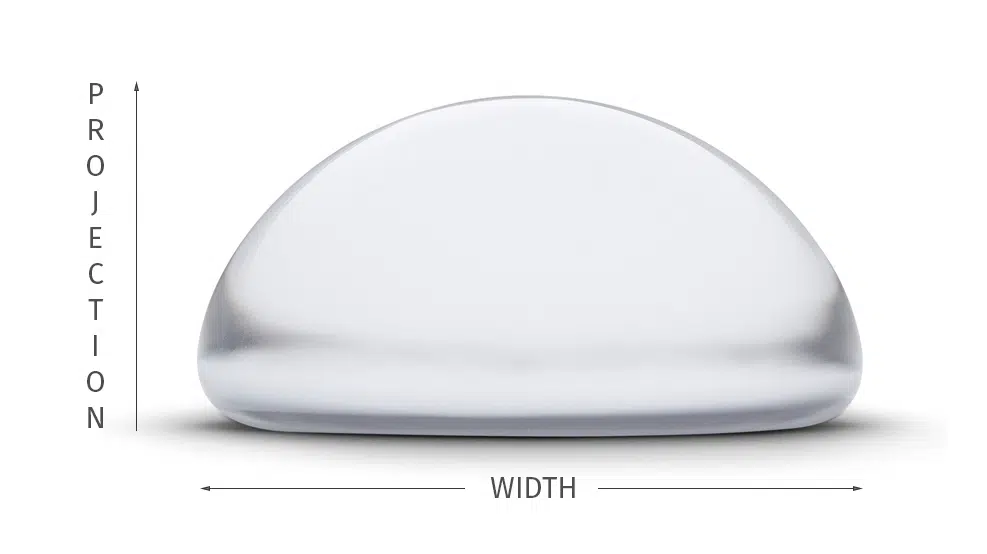

Your anatomy is an important factor that a surgeon will consider when helping you choose your perfect implants. Your shoulder and chest width, as well as your height, can help guide you in deciding on a profile that will suit you best. For example, petite women with narrow chests are generally good candidates for high profile implants. Women with wider chest widths can often more easily accommodate a variety of implant sizes and profiles.
Think about the ball of Play Doh again. Making the ball into a flat, pancake-y shape (lower profile) will give you a larger base width, higher height up on your chest and less projection. The half-moon shape (higher profile) will have a narrower base width, lower height and more projection. So for example, a low profile 400 cc implant will be wider and flatter than a 400 cc high profile implant.
Of course, your personal goals are just as important as your anatomy. If you have a specific look you’re trying to achieve, whether that be more natural or more dramatic, be sure to share those goals with your doctor.
If you want a very modest look, you should choose a smaller size implant and, usually, a lower profile implant. For a more busty look, you will want to consider a larger size implant with a higher. In Southern California, few patients seem to choose the “low” or “low plus” profiles. Most patients here prefer the higher profiles (full or extra full, sometimes moderate).
The good news is, there is a size and profile that is just right for every body.
Just keep in mind that implant size is much more important than implant profile in determining your final look. The size should always be chosen first. After that, you can think about profile. If you have chosen the size and are having a hard time deciding between two different profiles, don’t stress about it too much. The difference in dimensions between the two profiles will likely only be a few millimeters. In fact, you might not even be able to see much of a difference in the two profiles, especially when the implant is inside your body. For example, for a Natrelle 345 milliliter gummy implant, the differences between “moderate” profile and “full” profile are
When you look at 6 and 7 millimeters on a ruler, it’s really not that much of a difference.

Nothing beats looking at and feeling the different profiles for yourself. During your consultation appointment with your plastic surgeon, that’s exactly what you’ll get to do. By doing your homework and listening to your surgeon’s advice, you’ll find the best implants to meet your goals and work with your body shape.
If you are in the Temecula, Murrieta, Redlands, or Riverside area, we would love to meet you. When you schedule a consultation appointment with one of our doctors and our patient care coordinator, you’ll get to explore the different implant profiles for yourself to ensure that you’re making the best decision for you.